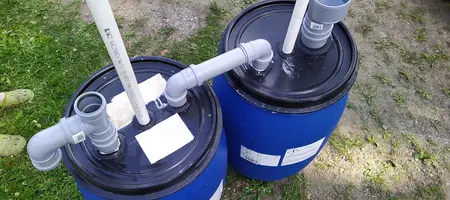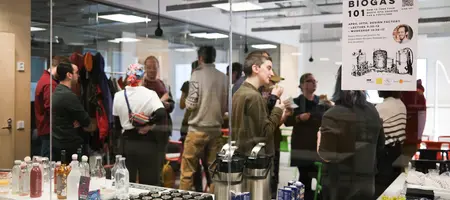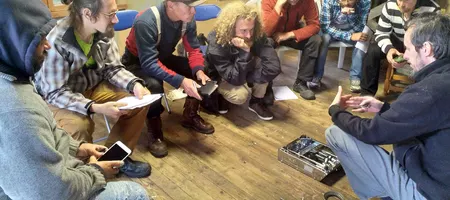In 2017 I wrote an article for Elonkehä about Biogas. The article was first written in English and then translated by Lumia into Finnish. Find this article devided into 3 parts here at Beyondbuckthorns. In the 3rd part you will also find a download of the Finnish article. We are going to releases one article after another over the next 3 weeks. Let's start with the first:
How I learned to love Biogas
One a sunny summer day I went to the local hackspace „Schaltwerk“, in Essen, Germany. I wanted to solder some circuits in order to get a interactive artwork done for an upcoming exhibition. When I arrived at the hackspace only one seat at the table was left, so I took a seat and started my work. After a while I figured that the other were a group of scientists having fun with Lego Mindstorm and some Arduino Robot Kits. I looked over my neighbors shoulder and we started a conversation about Robotics. He showed me the problem he is having with some loops and so I fixed some of his code and after 2 hours we had the robot driving on the floor. It was the day I meet Prof. Thomas Henry Culhane (TH). That day I got in touch with Biogas.
TH invited me to his home and showed me his DIY biogas system consisting of a set of Intermediate Bulk Containers (IBC), hoses and some bags. He talked continuously about gas outlet, gas storage, temperature, Archeae, Microbes, and while talking showed me all the bits and pieces necessary. We opened the gas valve went inside the house and lit the blue flame. Later we cooked a meal on Biogas. I began to realize that this simple technology could solve many problems. From refugee camps in Syria to everyone's home, freeing us from fossil fuels.
But how could that be achieved? By telling the story of Biogas as much people as possible. As we say it at Solar C³ITIEs and Biogascentral: please do try this at home.
Chemical composition of Biogas
Biogas consists of the gases
- Methane (CH4) – 50 to 80%
- Carbon Dioxide (CO2) 20 to 50%,
- Hydrogen Sulfide (H2S) traces,
- and traces of other gases.
It is produced by anaerobic digestions, means the gas gets produced in the absence of O2. It is produced by microorganisms (MO) called Archaea. Archaea constitute their own domain and kingdom of single-cell-microorganisms. They are procaryonts, so they have no nucleus in their cell. Within the Archaea domain the most important one for Biogas production are the Methanogens. They produce the Methane we want.
The Methanogens are commonly found in wetlands, ruminants and humans. They are responsible for, you can guess it: farting. Ever tried to lit a fart? Better not! (No I really don‘t want you to try that). Whenever a cow or any other ruminant shits we have a great source of Methanogens which we can use to start our digester on. Actually we can even feed our digester shit as there is still energy left to be converted to Biogas.
Besides the Methanogens we have several other microorganisms. After all the methane production process inside a digester is a three stage process, actually four if we take aerobic digestion into account as well.
Microbiology and chemical pathways
First the food we feed into the digester should be mechanically fragmented. That makes it easier for our MO friends to chew on their food. Basically the same what we do when we chew. Inevitably by feeding the digester we will feed oxygen into the system as well. So, inside the digester we first have some aerobic breakdown by facultative aerobic MO until the oxygen is used up. Facultative means that the MO could use oxygen but if non is present they keep going without. Best example for facultative MO is brewers yeast. Brewers yeast grows as long as air is present and once all air is used up it creates alcohol. Second stage then is extracellular breakdown by the MO using enzymes. The MO need to break down the large molecules into smaller ones so that those smaller molecules could pass through their membrane into their cell. At the 3rd stage they continue to break down the compounds in even smaller pieces inside their cell. The products formed are short chain fatty acids, H2 and CO2. At the last stage the actual gas production happens and CH4, CO2 and H2O are formed.
Scientifically we can described the stages as Hydrolysis, Acidogenesis, Acetogenesis and Methanogenesis. A possible order which results in CH4 could be:
Carbohydrates → Sugars → Carbonic Acid → Acetic Acid → Methane.
(end of Part 1) - continoue with Part 2








